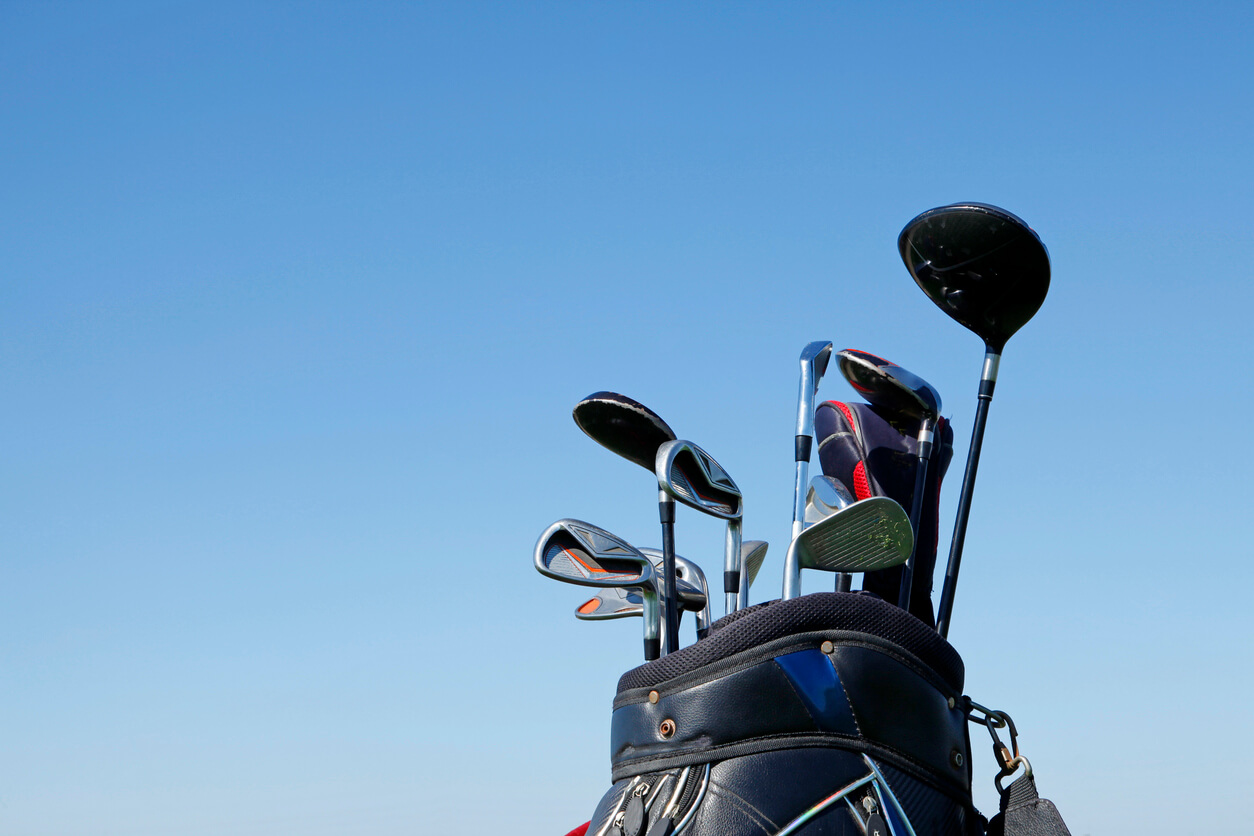The 5 types of golf clubs and when to use them
17 July 2025

Let’s face it, golf is a game in which anything can happen. No two rounds are the same, meaning you’ll find yourself in different positions every time. And that means you’ll find yourself requiring a different type of golf club.
But, for the beginner, discerning the difference between each club and, more importantly, knowing when to use them, can be quite the challenge.
So, in this guide, you’ll find the answer to the big question: what are the differences between the five main types of golf clubs? We’ll also look at when to use each, so you’ll be prepared the next time you hit the course.
1. Wood
It’s been a long time since woods were actually made of the material from which they found their name (these days, they’re typically made of metal), but the name has stuck. A wood is the type of golf club typically used for long-distance shots. In order to facilitate this, they’re designed with a longer shaft and a larger head than any other club.
There are two main types of woods:
- Driver (a 1-wood), which is especially long and light, and used from the tee. They’re designed to get real distance on your first shot of a game.
- Fairway wood, which, as the name suggests, is used for shots off the fairway when you’re still a long distance from the hole. These feature a higher loft to manoeuvre the ball out of a trickier surface and a shallower face height to create more distance. The standard form of a fairway wood is a 3-wood, although most brands offer options all the way up to a 9-wood.
Woods are essential to starting a game strong and hitting the ball as far as possible from the first couple of shots.
2. Irons
Once you’re within around 200 yards of the hole, it could be time to switch to an iron. They have a smaller shaft and clubhead than a wood. The clubhead is also angled in order to maximise precision. And this is the beauty of the iron—you can get distance with a little more accuracy than you might be able to with a wood.
There’s an incredible range of irons, which makes them particularly versatile options.
- Long irons, from a 2-iron to a 4-iron, are used from further out, although 2-irons are becoming slightly less popular with mid to high handicap players due to their smaller sweet spot and the added necessity for the player to have a very consistent swing. Instead, lots of players use a 5-wood or a hybrid in its place.
- Mid-irons (5-iron to 7-iron) and short irons (8-iron and 9-iron) are used the closer you get to the hole. Short irons have the biggest loft and smallest shaft out of this type of golf club. Long irons have the smallest loft and largest shaft.
3. Hybrids
The newest addition to the family, hybrids, were first popularised in 2003 by TaylorMade. Essentially, they combine elements of a fairway wood and an iron.
Hybrid clubs generally offer a shallow head and a lower centre of gravity towards the back. The result is a heavier club, but one that allows for better power and precision.
There’s a reason that, when TaylorMade introduced this type of golf club, they called it a ‘Rescue Club’. You can think of a hybrid almost as a ‘get out of jail’ option. They’re excellent at generating distance, accuracy, and loft, and are useful in trickier spots in the rough, thanks to sharper edges which can cut through longer grass.
For many golfers, hybrids have taken the place of long irons. They’re a great option to have in your bag.
4. Wedges
The aim of the game with wedges is to generate height while also achieving a soft drop. They’re a subdivision of irons, with the same type of clubhead, just with a much more pronounced and angled loft. Typically, this loft ranges between 46 and 64°. Their heads are also heavier, and the shafts are shorter. All of this creates a club which allows for the ball to be hit high, generate backspin, and land softly.
There are multiple different types of wedges, including:
- the pitching wedge: used within around 100 yards of the hole with the aim of landing the ball gently on the green. These are called pitch shots. The loft angle on a pitching wedge is between 46 and 48°
- the gap wedge: this has a 50-52° loft and can be used anywhere between 100 and 120 yards from the hole
- the sand wedge: designed specifically for shots out of bunkers. Its loft is between 54 and 56°, creating enough bounce for the club to get through the sand
- the lob wedge: this has the highest loft (58-60°) and is used for shots just outside the green. In this sense, it’s similar to the pitching wedge, but the ball is hit particularly high and lands even more softly
If you’re new to golf, your set may just include a pitching wedge and a sand wedge, but as your skill level increases, you’ll likely benefit from gap and lob wedges too.
5. Putters
The putter is a particularly specialised type of golf club, and there are more varieties available than any other. This is because putters are arguably the most important of all clubs. After all, it’s a putter you’ll use to put the ball in the hole!
There are generally three types of clubheads a putter might have:
- a traditional blade, often with the shaft found at the heel
- a heel-toe clubhead with a weighted heel and toe to allow for more forgiveness after mishits
- the mallet club, which has a much bigger clubhead to allow even more leniency
As for the lengths, a standard length refers to a shaft that is 32 to 36 inches long. Belly putters, as the name suggests, can go all the way up to the stomach area, and long putters can range between 40 and 50 inches in length.
So, there are various options available, but all putters are designed to limit backspin and skidding. The loft is very small because the ball needs to roll smoothly on the green without getting any airtime.
How to learn when to use each club

All of this can be quite overwhelming for beginner golfers, so learning when to use each club can be tricky. The reality is, though, it’s all about experience, and knowing how much distance you can get with each club.
That means you need to know where you are on the course and how far away from the hole you are. It’s no good knowing how far you can hit the ball with every type of golf club if you don’t know the course well enough to determine which club you need to use.
Familiarise yourself with your course and determine just how far you can hit the ball with each type of golf club. Once you do this, deciding which to use will become much easier—but it does take practice.
The clubs you need in your golf bag
At first, you might not need every single option available, but you do require at least one out of each of the five types of golf clubs. Consider a driver, a fairway wood (typically a 3-wood), a mid-iron (a 5-iron would be a good choice), a long iron (a 9-iron, for example), a pitching wedge, a sand wedge, a hybrid, and a putter.
Once your handicap drops and your experience develops, then you can branch further out. But if you stick to those essentials and follow these tips, you’ll be well on your way to knowing the different types of golf clubs like the back of your hand.
Specialist golf insurance with Golf Care
Golf is a game of unique skill and strategic thinking, especially when it comes to knowing when to use certain golf club types.
You’ll probably have several different types of golf club in your bag, and while you may not use all of them all of the time, that doesn’t make them any less important to you and your overall game. That’s why you might want to consider protecting them and yourself with specialist golf insurance through Golf Care.
Get a quote online today.
Please note the information provided on this page should not be taken as advice and has been written as a matter of opinion. For more on insurance cover and policy wording, see our homepage.
